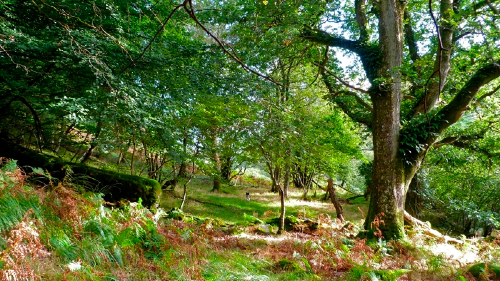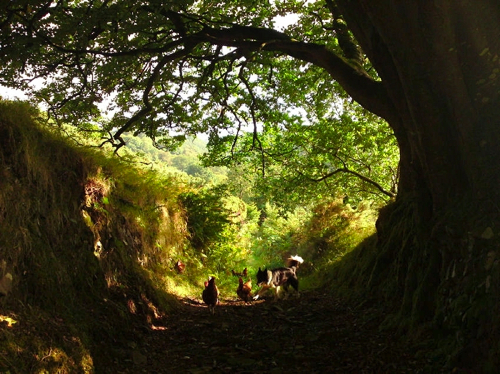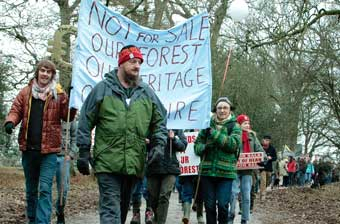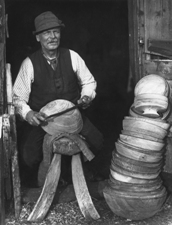Many ‘Pro’ NPPF lobbyists, including government itself and the RT Hon Greg Clarke, have stated that those who see a problem with the draft on offer, (who are not ‘Anti’ NPPF, they just don’t like this particular draft), cannot have read it properly.
This is a very wrong assumption to make. Most of us are used to much more ‘heavy’ documentation to plough through in order to comment on. The draft on offer, as Greg Clark rightly states, is simplified.
Take the Danish National Planning Policy as a case study, the English text version is only 12 pages long. It does not refer to landscape, it appears to extol economic growth (and the policy certainly has enabled growth) – why is it then so much more palatable?
Let’s go back to what is on offer to the English. The core of the text and the layout comes from the NPPF Practitioners Advisory Group.
It then appears to have been sent via those with the developers interests at heart for edit and then had it signed off by Greg Clark. Greg Clark has struggled to quote exactly the Brundtland definition of ‘Sustainable Development’, the Brundtland definition is in the core text. We had in fact progressed a long way from Brundtland, indeed we had to in order to allow for economic growth. Brundtland taken literally does not allow for the use of finite resources!
Most of Europe now accepts a ‘quadruple bottom line’ – in reference to ‘Sustainable Development’:
Economic; Environmental; Social; & Cultural
The tools are available, they simply need referral to. And thus we go back to Denmark as case study – Agenda 21 is referred to in a paragraph entitled ‘Cohesion With Other Plans’, and then a heavy emphasis is made of localism and public participation.
Take a ‘Brownfield’ site. Does this have lesser environmental value?
No, it may have more environmental value than let’s say, an area surrounding and including a Dartmoor Tor.
It may have a high ecological value, but a low aesthetic value.
It may contain toxic contaminates, but the naturalised or sometimes invasive growth are busy remediating the site at no cost financially or in terms of a risk to human health.
Brownfield does not then equal ‘sites of less environmental value’ as Greg Clark has stated and contained in the draft NPPF;
‘Plans should allocate land with the least environmental or amenity value where practical’ paragraph 165
But whose role is it to investigate the confusing web of land management jargon and systems at play in order to find a solution and aid development and / or environmental protection. It is the planner; whose arsenal of tools includes access to research from all those with much more specific roles to play in determining the localised factors at play.
Local authorities have a lot more weight on their shoulders than PPS’s or PPG’s and in the main have coped brilliantly. Those dealing with LA’s do need access to more easily digestible material. But how do you ensure that the ‘holistic’ angles that were allowed for within the previous planning system and which relate directly to affected people remain? There has to be a very strong emphasis on public participation. Does the localism bill provide this? It may have done but as soon as Ministers decided to ‘defend’ the NPPF it became obvious that establishing a real bottom up approach is impossible.
Going back to the Danish case study, public participation is a core element. It is true that if ‘National Interests’ outweigh then there is a need to seek legal intervention by way of a vetoing regional plans. But this is surely made simple and considerably less costly by way of a judgement which does not have to redefine and set precedents on the actual national policy document itself.
‘The aim is to coordinate local, regional and national interests through dialogue and partnership’
There is a glaringly obvious plus to the Danish National Planning Policy also, it is under the remit of the Danish Environment Minister. At the time of the planning policy becoming law in Denmark the environment minister was Connie Hedegaard, of the Conservative Peoples Party, often cited as parallel to the UK conservatives under David Cameron. The title ‘Environment Minister’ goes a long way in reassurance about the background in policy making.
It is not a suggestion to use the Danish system, (which was actually based on UK case studies – as was the Danish system for introducing the ‘European Landscape Convention’ from an ‘expert led’ position). But it is a clear illustration of a progressive national planning policy, from a very similar minded government in terms of ideals. However those ideals of ‘localism and big society ‘are starting to be questioned in the UK as government ministers appear to contradict themselves increasingly.
The Danish national planning policy trusts local, regional and municipal authorities. It trusts planners, practitioners and most importantly the public. The English draft NPPF does not do this, it tries instead to squash and minimise elements rather than simply producing documentation that can be referred to. A glossary or dictionary would be most beneficial in the first instance and then documentation for the developers’ needs and environmental needs, then trusting the planners to do their job.
We have read the draft NPPF on offer, it is just unfortunate that for all those with an interest it is, in its present form, simply poor. It was easy to read but made little sense until George Osborne verified our suspicions this week.
Therefore we now need to read and investigate; other case studies, Agenda 21 & other legally binding international documentation including European convention text, published academic research, etc.,.
This is ‘Big Society’ willing to help in the production of a sensible NPPF. Experts, practitioners and stakeholders willing to work for absolutely nothing, no funding or salary at all, indeed often paying their own way in trying to further a draft NPPF of worth and helping to educate the public about the wider issue along the way. Surely the developers and those in government should welcome our input, if nothing else but because it is cheap.
You can help keep the pressure on government ministers to answer our questions by supporting the National Trust and the CPRE campaigns.
Don’t forget, if you’re on social media to share these links with your friends and followers and tweet your questions/comments about the NPPF using the #NPPF hashtag.
This is OUR landscape!


























